This will be a bit longish post…:-)
A few weeks ago an in international team of astronomers announced the discovery of the largest structure in the universe: a group of quasars extending over a distance of 4 billion lightyear (ly).
Quasars (Quasi-Stellar Radio Objects) were discovered about 50 years ago. They look like stars but are so distant (billions of ly away) that they can not be stars. Now we know that they are active nuclei of galaxies, surrounding a massive black hole in the center. Billions of ly away means that we observe them as they were billions of years ago when the universe was still young.
More than 200.000 quasars are known at present. Some of them occur in (large) groups, called LQC‘s.The group that has now been discovered has 72 members (the black circles in the image). The red crosses form another, smaller group.
So, why is the discovery of this large group of quasars so exciting? To make that clear, we have to talk about the cosmological principle and the large-scale structure of the universe.
Long it has been thought that the Earth was the center of the Universe. Then it was discovered that Earth is one of several planets orbiting a star, the Sun. It is the blue marble in the image below. It is not in scale, light needs only 8 minutes to travel from the Sun to Earth, and more than four hours to reach the outermost planet Neptune.
Is the Sun the center of the Universe? No, the Sun is one of several hundreds of billions of stars in our galaxy, the Milky Way. Some of you may have seen the Milky Way on a cloudless clear night far away from cities, as a white band of light across the sky. Here is an artist impression of the Milky Way as seen by an observer from outer space. The approximate location of our Sun has been indicated with a red cross. The diameter of the Milky Way is about 100.000 ly.
Is then the Milky Way the center of the Universe? Again negative! Our Milky Way is just one of hundreds of billions of similar galaxies. The scientists now think that the Universe has no center! From each location and in each direction the Universe looks the same, if you observe it on a sufficiently large scale. This is called the Cosmological Principle
So, what is a sufficiently large scale? If the galaxies would be randomly distributed in the Universe, we would not need to zoom out further. But that is not the case! Our Milky Way is a member of a group of more than 50 galaxies, bound by gravity. It is called the Local Group. Most of the galaxies in this Local Group are small ones, with the exception of our neighbour, the beautiful Andromeda galaxy.
Andromeda is bigger than the Milky Way, may contain one trillion stars and is located at a distance of 2.5 million light-years from our galaxy. Here is a “3-dimensional” sketch of the local group.
The size of the Local Group is in the order of 10 million ly. Many more of these galaxy clusters exist, for example the Virgo Cluster, much bigger than our Local Group, consisting of more than 1000 galaxies, at a distance of 54 million ly.
Here is the Virgo Cluster. All the fuzzy blobs are galaxies, the light points are stars in our own Milky Way. Click on the image to enlarge it and take a few minutes to think about the meaning of life..:-)
We still have to zoom further out. Our Local Group, the Virgo Cluster, the Fornax cluster, the Eridanus cluster and about 100 more are part of an even larger collection, the Virgo Supercluster . Here is one more “3-dimensional” sketch of this supercluster.
You will see the Local Group in the center, the Fornax and Eridanus clusters and many more. We are talking now about a size of more than 100 million ly already!
Many more superclusters have been discovered. Could it be that these superclusters of galaxies are randomly distributed in the Universe. Let’s zoom out one more time! The image below shows the superclusters around us within a distance of 1 billion ly. So the width of this image is 2000 million ly.
Obviously this is not a random distribution. Clusters and superclusters are aligned along filaments filaments, with in between large portions of space almost without any galaxies. It looks like a kind of foam-like structure and is sometimes called the Cosmic Web. In the center you notice the Virgo supercluster. Keep in mind the zooming out steps we have made to reach here! Earth → Sol → Milky Way → Local Group → Virgo Cluster → Virgo Supercluster → Cosmic Web.
Do we need to zoom out more? According to the present cosmology theories: NO. Computer simulations starting from right after the Big Bang show that this foam-like structure on a scale of hundreds of millions of light-years is to be expected. Starting point for these simulations is the measured Cosmic Background Radiation CMB), as depicted in the image below.
To explain the relation between this CMB image and the large-scale structure asks for another post…:-). Basically the Standard model of Cosmology is used, including the effects of Dark Matter and Dark Energy. Here is a typical result of such a simulation. The image has a width of 1500 million ly The bright nodes represent Superclusters. You will notice strings of galaxies and voids, quite comparable to the real Universe. At this scale, the Universe looks basically everywhere the same.
We started this post with the discovery of a group of quasars extending about 4000 million ly. Quasars are nuclei of galaxies, so in the terminology used above, they would form a “cluster”. But a cluster of this size would not fit in the above image at all!
This explains the excitement among astronomers and cosmologists. Is the Standard Model of Cosmology wrong?
Let’s wait and see!
Several images in this post come from a fascinating website: An Atlas of the Universe

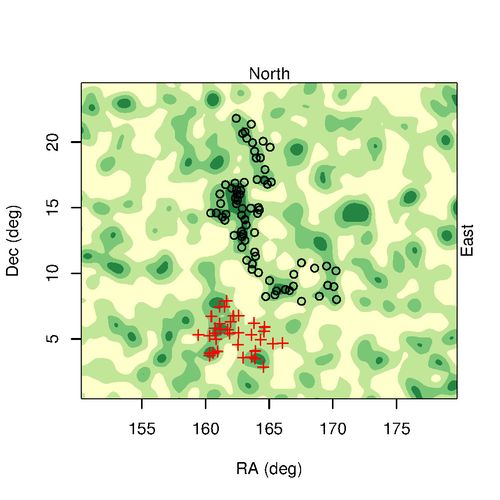
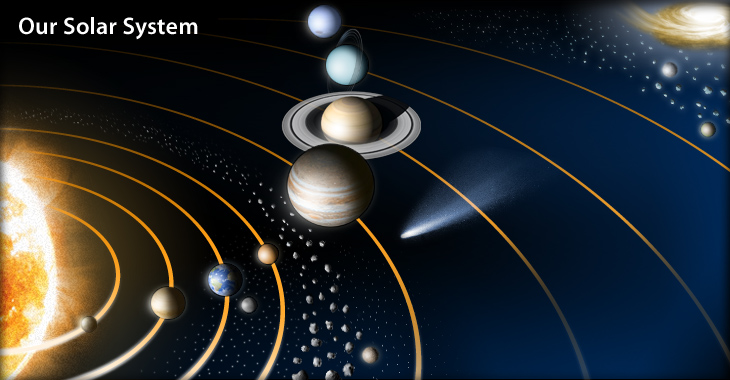
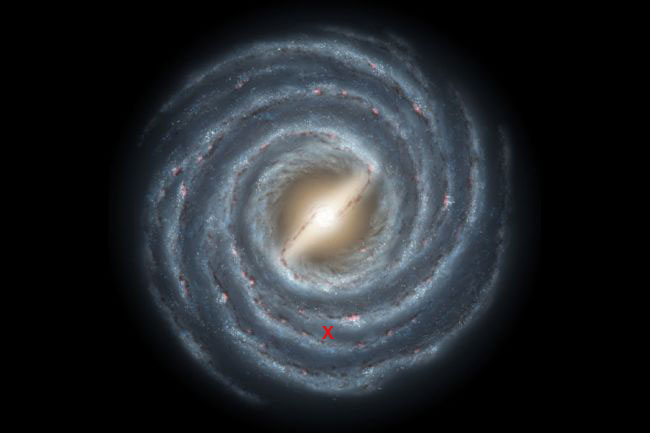


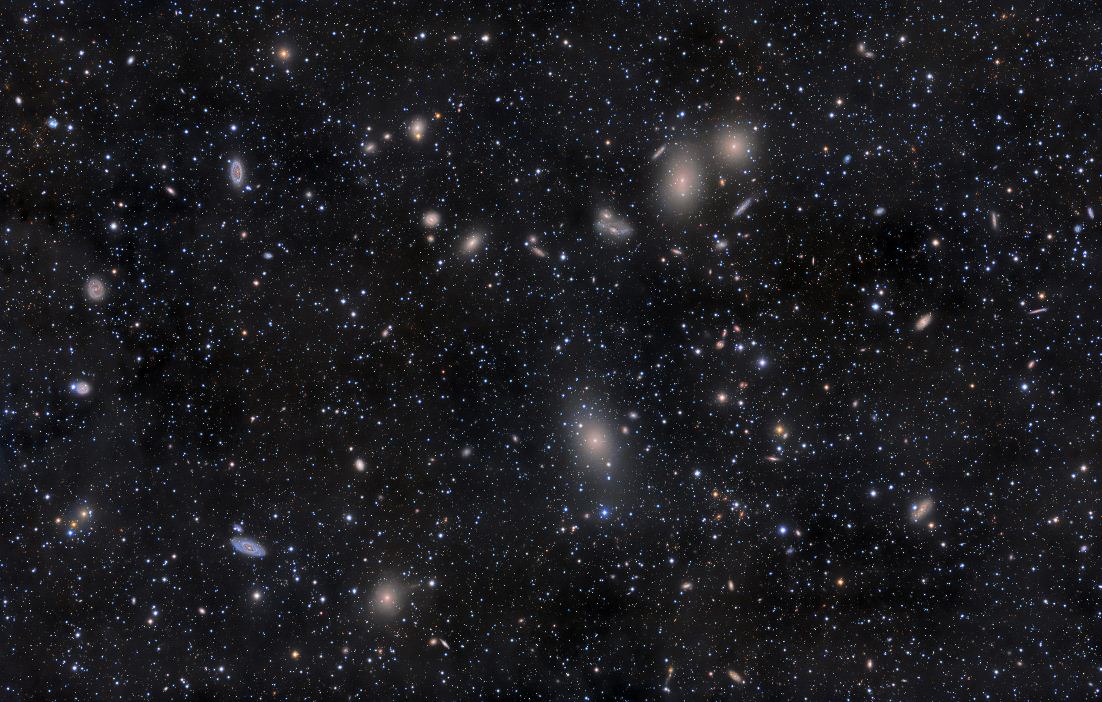
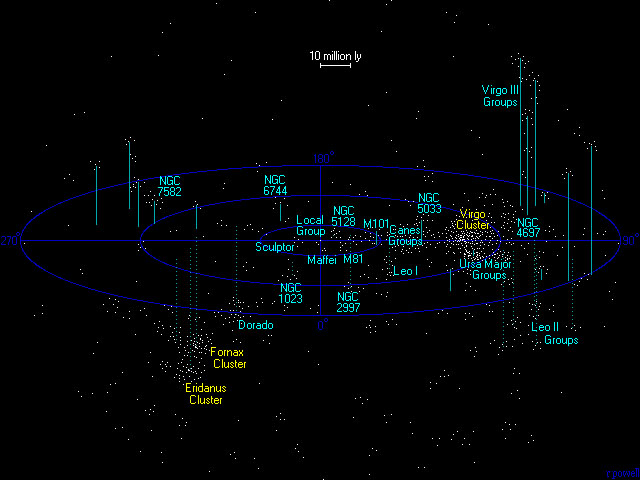
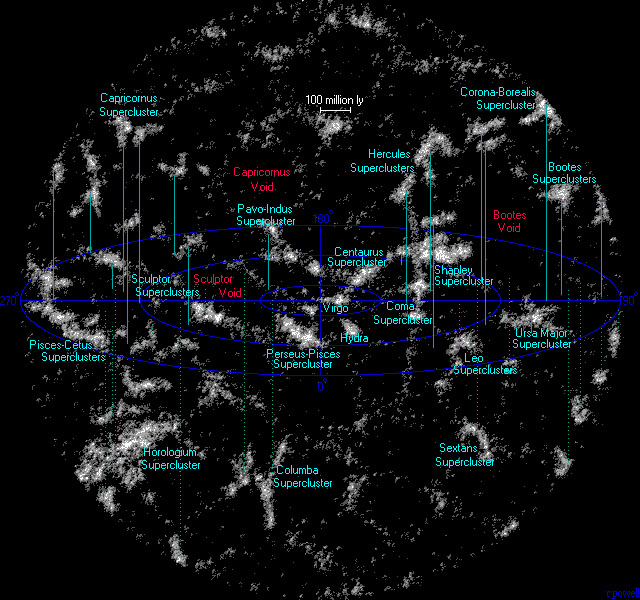
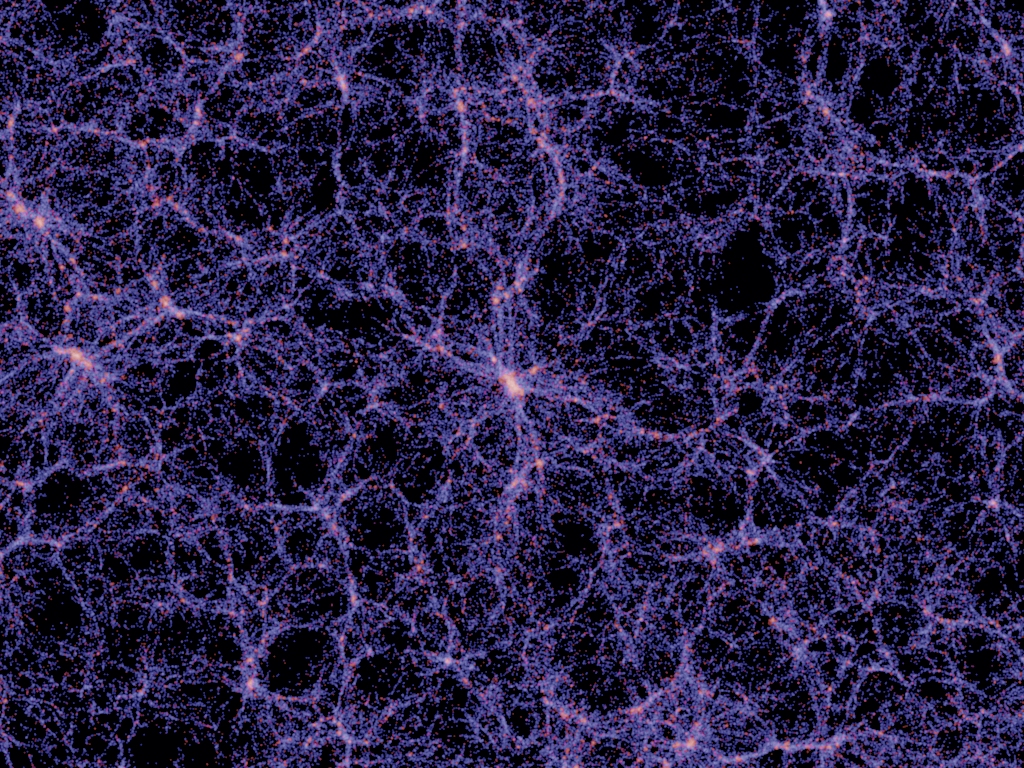
And all this comes from a singularity ? Remains difficult to grasp, must have been one hell of a big bang. 🙂
On purpose I have avoided to mention the concept of a singularity 🙂 Yes, it follows from Einstein’s GRT, but we also know that the laws of physics break down, when we are zooming in on the beginning of the Universe. By the way, the name Big Bang was coined by Fred Hoyle, who thought that the whole theory was nonsense and believed that the Universe was eternal (Steady State model).
Why not just state that the Universe is constantly expanding in unmeasurable ways . When HH The Dalai Lama wrote his book , the Universe in a Single Atom , it allows our human imagination to comprehend the size of the expanding Universe. Otherwise it becomes almost impossible for our human mind and imagination to think of Quasars and what they mean. Why is the representation of the Universe always in a spherical or oval manner ? Why not in a 2-dimensional plane as when we look up to the sky on a clear clear night?
During my University days in the 1960s, there was a common belief that the Universe was cyclic, although at that time not enough mass was found in the Universe to stop the expansion. Personally I think that this belief/hope was influenced by the popularity of Eastern philosophy with its ideas about reincarnation. The discovery of Dark Matter could have caused closure of the Universe, but then came Dark Energy, the expansion is going faster! Fascinating topic 🙂